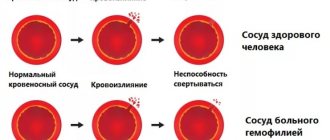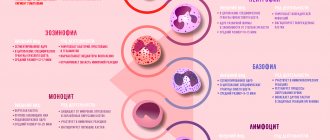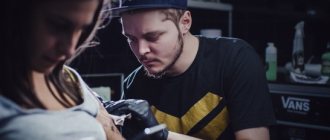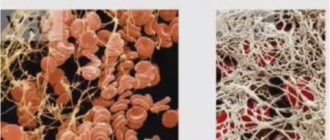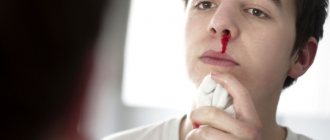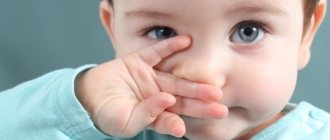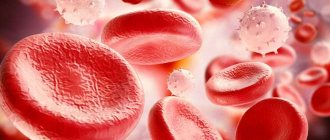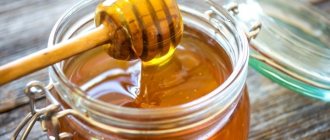Compound
Human blood becomes scarlet thanks to hemoglobin, which enriches it with oxygen. At this moment, oxyhemoglobin is formed. In its structure it contains iron cells. This element provides oxygen to the cells of the entire body. As it collects carbon dioxide, it turns into carbohemoglobin and releases the accumulated carbon dioxide into the lungs. The liquid at this moment has a dark red burgundy color.
Protein is made up of four blocks (called hemes). They contain iron atoms. Thanks to him, the blood acquires a scarlet tint.
What does color depend on?
First of all, the color of blood depends on red blood cells. They produce hemoglobin. It contains iron cells. Thanks to them, she becomes scarlet.
It is responsible for the supply of nutrients, oxygen, water, glucose to the organs, monitors the body temperature and, if necessary, can cool it down a little. To do this, the liquid takes excess heat from, for example, the liver and transfers it to the skin, which quickly cools.
Some marine inhabitants do not have hemoglobin, but there is another substance that performs exactly the same transport function - chlorocruorin. Because of this, a green liquid flows through their vessels.
Attention! The shade depends on what metal is present in the protein.
Crabs, spider crayfish and octopuses have blue-green blood. Hemocyanin flows in it. Some types of fish contain transparent biomaterial that looks like water. It consists of hemovanadium and vanadium ions.
Usage[edit | edit code]
The possibility of using hemocyanin in medicine as a component of antitumor vaccines is being studied. When forming conjugates with tumor antigens, it significantly increases their immunogenicity. This adjuvant helps overcome immunological tolerance or enhances the immune response to ganglioside antigens (GM2, GD2, GD3). A high level of T-cell immune response was found when using hemocyanin conjugates with mucin[34][35]. It is assumed that they can also be used in the technology of producing dendritic vaccines. Clinical trials of tumor vaccines are being conducted using this adjuvant in conjunction with idiotypic antibodies for B-cell lymphoma and anti-idiotypic antibodies for colorectal carcinoma[36][37].
Why are veins blue and not red?
Veins carry burgundy blood. They appear blue due to many factors. Primarily due to the color perception of the human eye.
Color is the wavelength of light emitted by an object or reflected by an object from another light source. Red light has the longest wavelength (700 nm). This means that it passes through objects and is not reflected from them. It also passes through the skin and, reaching the veins, is absorbed by hemoglobin. If you shine a red light on your hand, it will reflect everywhere except where the veins are. There it will turn black as it is absorbed. With this trick, doctors can find hard-to-reach veins.
Violet light is the shortest wavelength (400 nm). Blue has approximately the same indicators - 475 nm. It disperses easily and does not penetrate deep into the skin, but is reflected from it. If you look at your hand under a blue light, you won't be able to find any veins.
Attention! This trick is often used against those who like to go to clubs or other places. Violet or blue light in the toilet leaves no chance of revealing your veins.
Place your hand under regular white light. There are other colors in it, not just white. The veins will be blue, as it will be reflected from it, and the red will go deep into the skin and be absorbed there.
Why don't we see other vessels through which blood flows?
A person does not see the vessels because they are too deep under the skin. The light doesn't reach there. If the blood vessel is closer than 0.5 mm, it already absorbs all the blue light. Red is partially reflected, so people see this part of the skin as ruddy and pinkish. Veins that are clearly visible are located at a distance of no more than 0.5 mm from the surface of the skin.
Why can't we see arteries under the skin?
Most of the blood is in the veins, so they are much larger than arteries and vessels. Because blood puts more pressure on the arteries, they have thicker walls. Because of this, they are not as transparent and cannot be seen through the skin. If they were visible, arteries would likely look exactly like veins. Although the liquid in them is bright red.
Literature[edit | edit code]
- Alyakrinskaya I. O.
Hemoglobins and hemocyanins of invertebrates. - Moscow: Nauka, 1979. - 155 p. - Zhiteneva L. D., Makarov E. V., Rudnitskaya O. V.
Evolution of blood. - Rostov-on-Don: Azov Research Institute of Fisheries (AzNIIRH), 2001. - 104 p. - Steed J. W., Atwood J. L.
Supramolecular chemistry. - Moscow: Akademkniga, 2007. - 896 p. — ISBN 978-5-94628-303-8. - Yatsenko A.V.
Complex compounds in the respiration processes of living beings (Russian). - Heinz Decker, Nadja Hellmann, Elmar Jaenicke, Bernhard Lieb, Ulrich Meissner, and Jürgen Markl.
Minireview: Recent progress in hemocyanin research (English) // Integrative and Comparative Biology. - 2007. - Vol. 47, no. 4. - P. 631-644. - Van Holde KE, Miller KI
Hemocyanins (English) // Adv Protein Chem. - 1995. - No. 47. - P. 1-81. - Bernhard Lieb, Benjamin Altenhein and Jürgen Markl.
The Sequence of a Gastropod Hemocyanin (HtH1 from Haliotis tuberculata) // The Journal of Biological Chemistry. - 2000. - Vol. 275. - P. 5675-5681. - C. P. Mangum, J. L. Scott, R. E. Black, K. I. Miller, and K. E. Van Holde.
Centipedal hemocyanin: its structure and its implications for arthropod phylogeny (English) // Proc Natl Acad Sci USA. - 1985. - Vol. 82, no. 11. - P. 3721-3725.
Deoxygenated blood
Blood saturated with carbon dioxide, which returns through the veins to the heart. It has a darker shade, high temperature, low glucose and other nutrients. It contains more metabolic end products.
Attention! This type is most often used by doctors for examinations, since it contains waste products of the body.
It flows slowly, its movement and speed are controlled by special valves. It is much thicker than arterial fluid, flows out slowly, without damage. Stopping such bleeding is much easier and safer.
Notes[edit | edit code]
- ↑ In deep-sea sea cucumbers ( Echinodermata
), the blood is also not red, but blue - it contains vanadium instead of iron. Chemist's Handbook - ↑ 1 2 3 4 5 6 7 8 9 10 11 12 13 Heinz Decker, Nadja Hellmann, Elmar Jaenicke, Bernhard Lieb, Ulrich Meissner, and Jürgen Markl.
Minireview: Recent progress in hemocyanin research (English) // Integrative and Comparative Biology. - 2007. - Vol. 47, no. 4. - P. 631-644. - ↑ 1 2 3 4 Kristina Kusche, Hilke Ruhberg, and Thorsten Burmester.
A hemocyanin from the Onychophora and the emergence of respiratory proteins (English) // Proc Natl Acad Sci USA. - 2002. - Vol. 99, no. 16. - P. 10545—10548. - ↑ 1 2 Jürgen Markl.
Hemocyanins in spiders (English) // Journal of Comparative Physiology. - 1980. - Vol. 140, no. 3. - P. 199-207. (unavailable link) - ↑ Elmar Jaenicke, Heinz Decker, Wolfgang Gebauer, Jürgen Markl and Thorsten Burmester.
Identification, Structure, and Properties of Hemocyanins from Diplopod Myriapoda // The Journal of Biological Chemistry. - 1999. - Vol. 274. - P. 29071–29074. - ↑ 1 2 Silke Hagner-Holler et al.
A respiratory hemocyanin from an insect (English) // Proc Natl Acad Sci. - 2004. - Vol. 101, no. 3. - P. 871-874. - ↑ Chemist's Handbook
- ↑ 1 2 3 4 J. Leiden Webb.
Magnetic properties of Hemocyanin (English) // California Institute of Technology: Report. - 1940. - P. 971-972. - ↑ 1 2 3 4 A. Ghiretti-Magaldi and F. Ghiretti.
The pre-history of hemocyanin. The discovery of copper in the blood of molluscs // Cellular and Molecular Life Sciences. - 1992. - Vol. 48, no. 10. - P. 971-972. (unavailable link) - ↑ 1 2 Bernhard Lieb, Wolfgang Gebauer, Christos Gatsogiannis, Frank Depoix, Nadja Hellmann, Myroslaw G Harasewych, Ellen E Strong and Jürgen Markl.
Molluscan mega-hemocyanin: an ancient oxygen carrier tuned by a ~550 kDa polypeptide (English) // Frontiers in Zoology. - 2010. - Vol. 7, no. 14. - ↑ Volbeda A, Hol W.
Crystal structure of hexameric hemocyanin from Panulirus interruptus refined at 3.2Å resolution // J Mol Biol. - 1989. - Vol. 209. - P. 249-279. - ↑ Magnus K, Hazes B, Ton-That H, Bonaventura C, Bonaventura J, Hol W.
Crystallographic analysis of oxygenated and deoxygenated states of arthropod hemocyanin shows unusual differences (English) // Proteins. - 1994. - Vol. 19. - P. 302-309. - ↑ Cuff M, Miller K, van Holde K, Hendrickson W.
Crystal structure of a functional unit from Octopus hemocyanin // J Mol Biol. - 1998. - Vol. 278. - P. 855-870. - ↑ 1 2 Yatsenko A.V.
Complex compounds in the respiration processes of living beings (Russian). - ↑ Bonaventura C. and Bonaventura J.
The Mollusca Volume 2. - New York: Academic Press, 1983. - pp. 26-29. - ↑ Britton G.
Biochemistry of natural pigments. - Moscow: Mir, 1986. - P. 177. - 422 p. — 3050 copies. - ↑ Michael EQ Pilson.
Variation of hemocyanin concentration in the blood of four species of Haliotis // The Biological Bulletin. - 1965. - Vol. 128. - P. 459-472. - ↑ 1 2 3 Brouwer Marius, Denslow Nancy.
Molecular Indicators of Dissolved Oxygen Stress in Crustaceans: Report. — 2003. - ↑ 1 2 Monod J, Wyman J, Changeux J.
On the nature of allosteric transitions: a plausible model (English) // J Mol Biol. - 1965. - No. 12. - P. 88–118. - ↑ 1 2 Robert C, Decker H, Richey B, Gill S, Wyman J.
Nesting: hierarchies of allosteric interactions (English) // Proc Natl Acad Sci USA. - 1987. - No. 84. - P. 1891-1895. - ↑ Sterner R, Vogl T, Hinz HJ, Penz F, Hoff R, Foll R, Decker H.
Extreme thermostability of tarantula hemocyanin (English) // FEBS Lett. - 1995. - Vol. 364, no. 1. - P. 9-12. - ↑ Richey B, Decker H, Gill SJ.
Binding of oxygen and carbon monoxide to arthropod hemocyanin: an allosteric analysis (English) // Biochemistry. - 1985. - Vol. 24, no. 1. - P. 109-117. - ↑ Zhiteneva L. D., Makarov E. V., Rudnitskaya O. V.
Evolution of blood. - Rostov-on-Don: Azov Research Institute of Fisheries (AzNIIRH), 2001. - 104 p. - ↑ Gupta AP
Arthropod Phylogeny. - New York: Van Nostrand Reinhold Company, 1979. - pp. 717-724. — 735 p. - ↑ Raymond F. Sis, Don H. Lewis, Tom Caceci.
The Hemocytes and Hemopoietic organs of a Penaeid Shrimp (Penaeus vannamei) (English): Report. — 1987. - ↑ A. Ghiretti-Magaldi, C. Milanesi and G. Tognon.
Hemopoiesis in crustacea decapoda: origin and evolution of hemocytes and cyanocytes of Carcinus maenas // Cell Differentiation. - 1977. - Vol. 6, no. 3-4. — P. 167—186. (unavailable link) - ↑ Heinz Decker and Thomas Rimke.
Tarantula Hemocyanin Shows Phenoloxidase Activity // The Journal of Biological Chemistry. - 1998. - Vol. 273, no. 40. - P. 25889–25892. - ↑ N.B. Terwilliger, M.C. Ryan and D. Towle.
Evolution of novel functions: cryptocyanin helps build new exoskeleton in Cancer magister // Journal of Experimental Biology. - 2005. - Vol. 208. - P. 2467-2474. - ↑ 1 2 3 4 Thorsten Burmester, Klaus Scheller.
Common Origin of Arthropod Tyrosinase, Arthropod Hemocyanin, Insect Hexamerin, and Dipteran Arylphorin Receptor // Journal of Molecular Evolution. - 1996. - Vol. 42, no. 6. - P. 713-728. (unavailable link) - ↑ 1 2 3 Anupam Nigam, Jimmy Ng, and Trustin Ennacheril.
The Molecular Evolution of Arthropod & Molluscan Hemocyanin. Evidence for Apomorphic origin and convergent evolution in oxygen binding sites. - 1997. - Vol. 41. - P. 199-228. - ↑ 1 2 van Holde KE, Miller KI
Hemocyanins (English) // Adv Protein Chem. - 1995. - No. 47. - P. 66-68. - ↑ Thorsten Burmester.
Molecular Evolution of the Arthropod Hemocyanin Superfamily (English) // Molecular Biology and Evolution. - 2001. - No. 18. - P. 184-195. - ↑ C. P. Mangum, J. L. Scott, R. E. Black, K. I. Miller, and K. E. Van Holde.
Centipedal hemocyanin: its structure and its implications for arthropod phylogeny (English) // Proc Natl Acad Sci USA. - 1985. - Vol. 82, no. 11. - P. 3721-3725. - ↑ Soo Kie Kim, Govindaswami Ragupathi, Musselli C. et al.
Livingston comparison of the effect of different immunological adjuvants on the antibody and T-cell response ot immunization with MUC1-KLH and GD3-KLH conjugate cancer vaccines (English) // Vaccine. - 1999. - Vol. 18, no. 12. - P. 597-603. - ↑ R. N. Stepanenko, R. Ya. Vlasenko, Yu. E. Tsvetkov, E. A. Khatuntseva, E. M. Novikova, I. K. Werner, N. E. Nifantiev, R. V. Petrov.
Humoral immune response of mice to a conjugate of synthetic carbohydrate fragments of a tumor-associated antigen of ganglion nature with the protein hemocyanin - a prototype of an antitumor vaccine (Russian) // Immunology. - 2010. - No. 2. Archived on September 23, 2010. - ↑ Hsu FJ, Caspar CB, Czerwinski D et al.
Tumor-specific idiotype vaccines in the treatment of patients with B-cell lymphoma – long-term results of a clinical trial (English) // Blood. - 1997. - Vol. 89. - P. 3129-3135. - ↑ Birebent B, Koido T, Mitchell E et al.
Anti-idiotypic antibody (Ab2) vaccines: coupling of Ab BR3E4 to KLH increases humoral and/or cellular immune responses in animals and colorectal cancer patients // J Cancer Res Clin Oncol. - 2001. - Vol. 127. - P. 27-33.
Purple
This shade is found in invertebrates, such as mollusks. Instead of hemoglobin, they have another protein - hemerythrin. It also performs a respiratory function in the body. It contains several times more iron than human protein.
While the liquid is saturated with oxygen, hemerythrin gives it a purple tint. After the release of oxygen, the liquid becomes pink. This protein is much less efficient in its transport function than hemoglobin.
Green color
Another protein, chlorocruorin, gives blood a green tint. It is in plasma fluid. Its composition is similar to hemoglobin. The main difference is iron oxide (ferrous iron in the blood of mammals). It gives it the green color.
Some animal species contain not only chlorocruorin, but also hemoglobin. When the blood is saturated with oxygen, it acquires a rich green tint, and after it is released, it becomes light green. Sometimes it turns light red (with oxygen oversaturation).
Normally, the color of human blood is scarlet or burgundy. It depends on the function that the fluid performs - delivering oxygen to the organs or carbon dioxide to the lungs. A colorless, green or purple liquid may flow in the vessels of marine life. This depends on the type of protein (such as chlorocruorin or hemerythrin) and the iron produced in their body.
